Target your customers precisely with buyer personas
Do you really know who are your customers? Do you have a clear picture of your market? A precise definition of your market is the key to an efficient strategy.
Today, I found insects in my kitchen.
My first reaction has been to buy insecticide. I went to my supermarket then found lots of products to get rid of insects. There was one for ants, one for spiders and one for cockroaches. As I did not pay much attention on the type of invader living in my kitchen, I had no choice but to buy the three products. I returned home with my products, used them, and saw... a caterpillar crossing my kitchen!
If only I paid some attention to the insects' type, I could have saved money by purchasing the right product and the result would certainly have been more efficient.
Now, what if the insects were my customers, the products I used my marketing strategy, and the result my ability to reach my prospects?
If my potential customer was a nine year old boy, would I reach him with advertising campaigns aiming children, adults and elders? Some people might. Some people use a rocket-launcher to shoot a fly. But you don't: you know that a precise shot isn't only cheaper but also much more efficient.
If you want to reach your customers correctly you must start with knowing who they are.
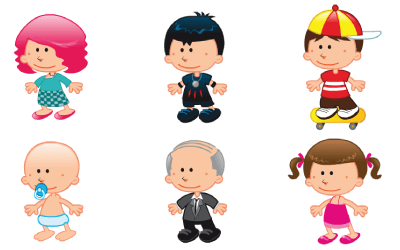
The first step
Before getting into complicated strategies and theoretical explanation, let's sit for a second and look at the situation.
You have a product.
You built this product for a specific market, and if you didn't, then it is time to seriously think what kind of market would be interested in your product.
Among entrepreneurs a large percentage believes that their product is made for "anyone". This might be the largest and most common mistake made by entrepreneurs and it almost automatically leads to failure.
The golden rule is "Each product has a specific market". If you believe you have a product that fits all, think again.
In this article we will see together what are buyer personas and how to use them to target precise markets, save money and improve your marketing strategies' efficiency.
Create profiles
You have a rough idea of what is (are) your market(s).
You must now create profiles of those people that represent your market. To help you with this step, I will give you a concrete example.
I am selling a car toy. My target market is boys between 6 and 9 years old.
I can now create my profile: I target a boy aged between 6 and 9, living on the US territory and being interested in cars.
Congratulation, you created your first basic profile! But hold on: the work isn't done yet! This is only a simple profile: we are still far from our buyer persona.

Enrich your profiles
We have a basic profile: a young boy aged 6 to 9. We gave it some basic description such as territory and large interest. Now, we must precise our profile with clear data.
To achieve that, let's first categorize the type of data that might be of interest for us:
- age
- sex
- location
- language
- interests
- purchasing power
- decision power
- social background
- communication type
- communication channels
- information channels
- schedule
- job type
- ...
This list could be shorter or much longer: the more information you input in your profile, the more precise will your marketing strategies be.
There isn't a rule regarding which type of information must appear in your list: for each market you must identify what would be relevant of irrelevant and focus only on what brings value to your study.
Before going with a concrete example, I'd like to precise some of the items above that might not be crystal clear yet:
Interests: What is that person interested in? This doesn't have to be a single focus: you can list here a bunch of interests such as "video games", "internet", "economic books", etc. Keep in mind that the more precise your list gets, the narrower your target is. If you become too precise, this profile will represent only a small percentage of the market you target and you might need to create some alternative profiles to complete your target.
Purchasing power: how much money would this person be able and willing to spend for an item such as the one you offer?
Decision power: this is a key point. Is this person the one who makes the decision? Does this person influence the decision?
Communication type: does this person speak/write in 'conventional' English? Does this person use "SMS" language? Street language? What type of communication does this person use on a daily basis? It is essential to know this point, as you must address your prospects in a type of language that they would understand. (you do not talk to a CEO the way you talk to a 6 years old girl).
Communication channel: what does this person usually use to communicate? Phone, SMS, MSN, traditional letters, email, etc... If you know how a person communicates you know how to communicate with him.
Information channels: this is also a key point. How to reach that person? Is it someone who watches TV, reads magazine, browse the internet, walks in the street, listen to radio...? Try to narrow your selection to a few communication channels that this person is very sensitive to: those are the channels you will use to reach him. (you will have more chance to reach a CEO when advertising in a financial magazine than on a children TV channel)
Now that the main categories are clearer, let's take the example of the 6 to 9 years old boy.
- age: 6-9
- sex: male
- location: USA
- language: English
- interests: TV cartoons, children websites, comic books, car toys (must give specific examples here)
- purchasing power: toys between 5-20USD, up to 40USD in Christmas season
- decision power: none. His mother makes the decision, but he can influence it.
- social background: modest
- communication type: children talk, simple words
- communication channels: school's playground discussions
- information channels: kids TV channel, children's magazines (must give specific examples here)
- schedule: free on Wednesdays and weekends, watch TV between 6 and 7 on evenings
- job type: primary school
Here is my target's profile. Now, I have a clear overview of who is my market. I know who, but I also know how to attract that person, how to reach that person, how to address that person. I also notice that this kid influence the decision but does not make it. That indicates me that there is another profile I must build: the mother's profile, the one to who I must also communicate about my product if I want the purchase to happen.
This little exercise took me a few minutes to create the initial list, plus probably a few extra hours to indicate specific facts such as the TV channel watched or the type of magazine that this profile reads. It gives me a clear overview of my market and leads me to potential extra research (such as the creation of the mother's profile).
Now, let's move to last step and transform this "profile" into a real "buyer persona".
Create your buyer personas
Now that your profile is complete, you can move to the last section: give it a name and a picture.
This step is essential: that's what gives life to your character.
My 9 years old boy is called "Elroy": "Elroy the young boy".
And Elroy also has a picture.
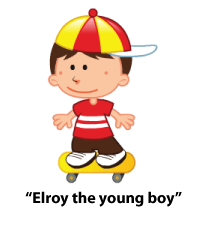
Now, Elroy isn't just "statistics": Elroy exists, he has specificities and preferences.
Now, when you will build your marketing strategies, internally you will refer to your strategy as "aiming Elroy" and everyone in your team will know that you want to target a 6-9 years old boy who goes to school, watches kids TV programs, influences the purchase decision, speaks English, etc...
From now, each of your marketing strategy will be clear and properly positioned: you won't shoot in random directions any longer; you will target specific channels with a specific message and save money while increasing efficiency.
Keep in mind that you probably don't have a single buyer persona but a few of them. Don't get extreme (you shouldn't have more than 6 to 8 buyer personas, otherwise you have been too specific and should enlarge each one's profile) or minimalist.
Buyer personas are what make the difference between a targeted campaign and a global (or random) campaign.
Now you can print each of them on a different poster a keep them in your meeting room to always keep in mind that those are the people you work for and the people you must content with each product and strategy.
Once applied this method, I invite you to discover some other marketing tools that would help you planning and monitoring your strategies: "Marketing concepts for product development: Product Life Cycle, Death Valley Curve, Marginal Utility".
If you are looking for a tool to help you creating buyer personnas for B2B, I have discovered this very interesting website: http://www.mltcreative.com/up-close-and-persona/
Please share with us your experience and results with this method!
Last update: 2024-04-17 Tags: buyer persona market marketshare customer market definition marketing strategy

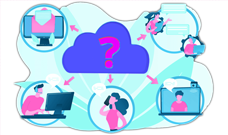



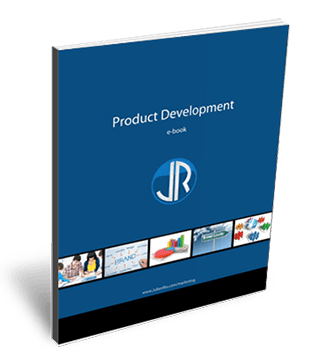

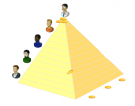









 Français
Français English
English